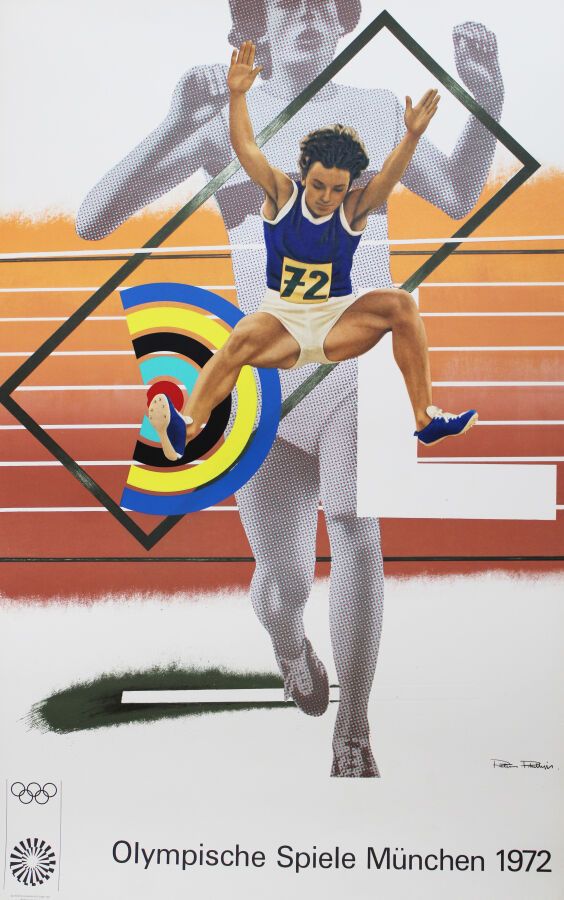Description
PHILLIPS Peter (English artist, born in 1939) - POSTER for the Olympic Games of Munich in 1972 - "Olympische Spiele München 1972". Original lithographic poster. Signed in the plate. Proof with the letter and the copyright "Olympia 1972 GmbH 1970", printed on glossy wove paper. Peter Phillips is one of the most prominent British pop artists of our time. His work ranges from oils on canvas to multimedia compositions and collages. He has exhibited his work alongside his American counterparts Andy Warhol, Roy Lichtenstein and James Rosenquist. 100 x 64 cm. Condition A (good condition).
328
PHILLIPS Peter (English artist, born in 1939) - POSTER for the Olympic Games of Munich in 1972 - "Olympische Spiele München 1972". Original lithographic poster. Signed in the plate. Proof with the letter and the copyright "Olympia 1972 GmbH 1970", printed on glossy wove paper. Peter Phillips is one of the most prominent British pop artists of our time. His work ranges from oils on canvas to multimedia compositions and collages. He has exhibited his work alongside his American counterparts Andy Warhol, Roy Lichtenstein and James Rosenquist. 100 x 64 cm. Condition A (good condition).
You may also like
